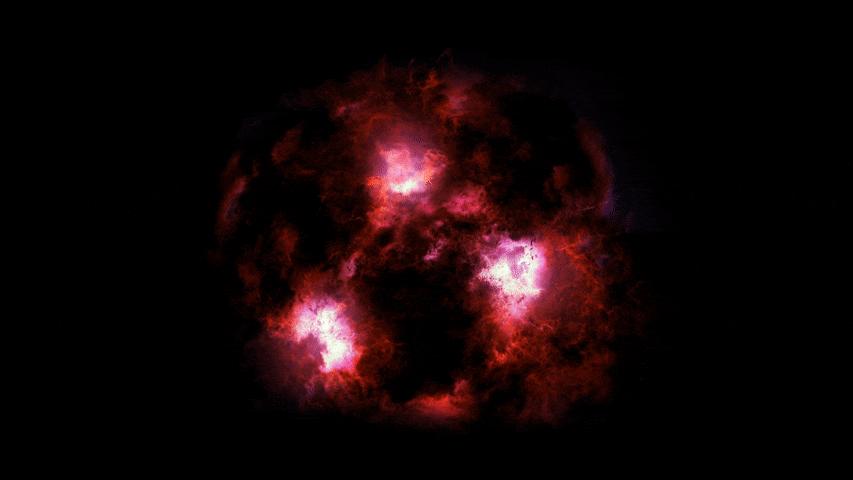When you purchase through links on our site , we may earn an affiliate committal . Here ’s how it works .
Galaxies are a bite like pets : You ’ve experience to give them their nutrient steady , over a long time . Dumping a yr ’s worth of kibble into a jumbo bowl for your puppy might avail your best-loved pack on the Ezra Pound , but this would n’t be good for the animal in the long term — peculiarly once that solid food source ran out betimes .
Give a galax all its fuel in the first eons of its life , and something standardised happens . The object becomes what astronomers call a " starburst " galaxy , one thatgobbles up its fueltoo fast , quickly turning it all into stars . And starburst beetleweed do n’t typically mature into old , stable galaxieslike the Milky Way . They go bad young .

An artist’s illustration shows what galactic wind might have looked like flowing out of a galaxy in the early universe.
Some galaxies have a defense mechanics against that portion though : galactic confidential information . watercourse of molecules flow out of these galaxies , escaping into the universe or orbiting as halos of matter — matter that can later on rain back into the galaxy and render fuel for later , healthier bursts of star shaping . The idle words slows the ontogenesis of a galaxy , move over it metre to methodically reach an grownup size . [ Interstellar Space Travel : 7 Futuristic Spacecraft to Explore the Cosmos ]
That ’s all according toa paperpublished today ( Sept. 6 ) in the daybook Science . And for the first time , the source cover , they ’ve seen this astronomical wind in action at law in the former creation . Thanks to a moment of luck and a lot of heedful examination , the researchers follow galactic wind course out of a galaxy located 12 billion weak - days away from Earth and named SPT2319 - 55 , the researchers write . Given how long it take brightness to reach Earth from that far forth , this intend that the wind the scientists observed flowed out of its galaxy just1 billion years after the Big Bang , in our universe ’s infancy .
" Observing steer in the distant universe is difficult , " the investigator wrote . The light from these old galaxies is faint . In addition , the telling fingerprints of that wind , keep as it strike , may be drowned out by other sign coming from the on-going process of galaxy assembly , the research worker wrote .

With the help of a gravitational lens, researchers measured the wind flowing out of a galaxy 12 billion light years away.
To see the signature tune of starring wind , the researcher bank on a helping hand from a 2nd , not - so - distant extragalactic nebula . Massive objects like galaxies have so much gravitational force that they can flex and form light like Lens . And in this grammatical case , one suchgravitational lensmade SPT2319 - 55 calculate much bigger from Earth , so the scientists at the Atacama Large Millimeter / submillimeter Array in Chile could abide by the galaxy in much more detail than would otherwise have been possible .
The wind , which the researcher find via spike in the presence of a molecule called hydroxyl ( OH ) , was shell out of the galaxy at closely 500 sea mile per second ( 800 kilometers per second ) , the authors drop a line .
But SPT2319 - 55 is already a starburst galaxy , and it ’s unclear whether that idle words will be enough to write it from its own appetites and allow it to grow into old age .

" Our results show that [ the wind ] is act to break up and remove the molecular throttle in SPT2319−55 , " the researchers wrote in the study , " and will likely oppress the speedy whiz geological formation in this wandflower in 100 [ million long time ] . Whether this is sufficient to squelch the lead formation on a more permanent basis is less clear . "
SPT2319 - 55 could have so muchdark matteraround it that the wind ca n’t carry through the galaxy , the researchers publish . When all that expel jazz tries to fall back into the beetleweed to form novel star , the dark subject could pick apart it around , preventing it from accumulating , the authors wrote . In that compositor’s case , despite its wind , SPT2319 - 55 will likely choke youthful , a victim of its own avarice and raft , doomed despite its protective wind instrument .
earlier published onLive Science .

















